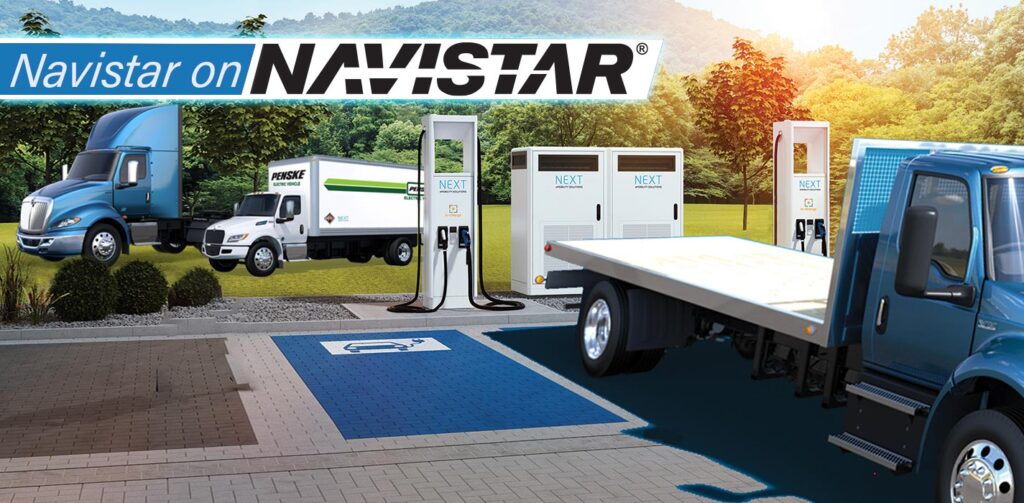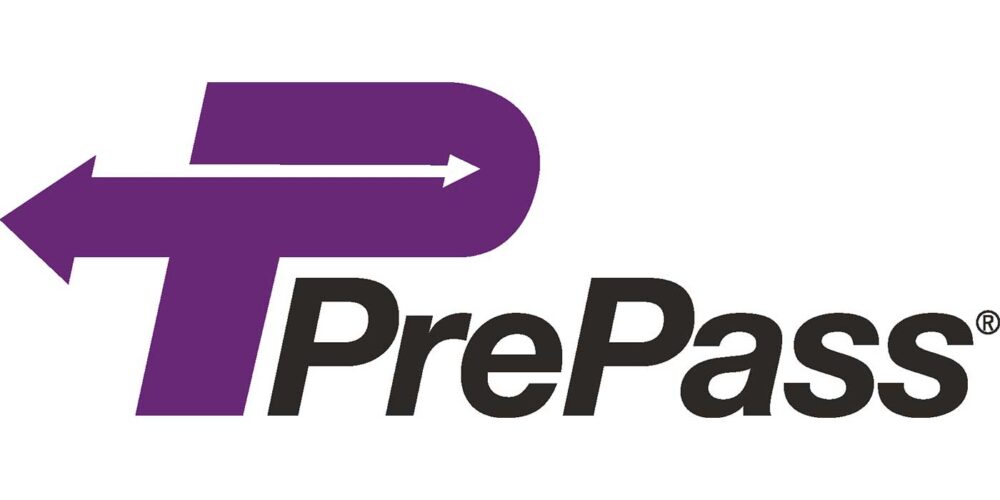Electrification is the talk of the trucking world and Navistar has thrown its hat into the EV ring with the launch of the eMV. Its battery electric motor provides peak power of over 335 HP, or 250 kilowatts, with continuous power of 215 HP or 160 kW. The eMV has a 210kW capacity high-voltage battery that provides a 135-mile range when fully charged.
Most interestingly, Mathias Carlbaum, chief executive officer and president, Navistar International Corp., doubled down on the investments in battery electric, even in long-haul applications where hydrogen fuel cells dominate the “Will it happen?” headlines.
“We do believe there is a use case for hydrogen; technically hydrogen is less energy efficient over the time of energy. Certainly, for applications with long distances, as well as the flexibility of working shorter and longer, hydrogen will have a case,” he said. “However, we do believe that that case will be closed over time with even better battery technology. I cannot put the time or range that this will be applicable, let’s say, how many years, et cetera, but there is a window there.”
Wait a minute, did he just say battery technology will overtake hydrogen fuel cells in long-haul applications?
“We strongly believe that the long-term solution given the basics of energy-efficient storage in batteries will prevail,” he clarified. “Over time, because of the vector energy efficiency of batteries, and as tech moves forward in the mid-2030s, this will catch up.”
But what about the hydrogen fuel cell partnership with GM and One2H announced in January 2021?
“We’re still working with them,” Carlbaum confirmed. “We are working in partnerships to have our solutions on the market to cover that period [of battery technology development] that we think is going to be a part of the long haul market in the States.”
Regardless of how the EV technology shakes out in applications, Carlbaum anticipates that there will be a day when Navistar will only offer zero-emissions vehicles.
“Our products in the full chain of the value proposition of Navistar will be zero carbon no later than 2040,” he said. “That is the road we’re paving today.”
Building that road will depend on the support EVs get from both the trucking industry and the government. Carlbaum noted that subsidies and incentives are necessary in the short-term. Speaking of short term, diesel development at Navistar will continue.
“We launched a new engine platform just a month ago that proved there is still investment and interest in combustion engines,” he said. “There will be a phase out time, but there is huge improvement potential in terms of lower fuel consumption on current diesel platforms.
“We have to just mind our investment in R&D. What we invest today might be harvested five, seven or eight years from now. In the total amount of resources today, it is starting to shift more heavily towards electrification, but diesel products are still coming out.”
Building on lessons from electric buses
“I think this would be a propeller for the whole electrification of commercial vehicles in America and the segment couldn’t be better,” Carlbaum said about the growth of EVs in the bus segment. “We foresee that there is an uptake in volume coming towards the later part of 2023 that we’re preparing for. We have a product out there today, running in both the U.S. and Canada. So this is a learning journey.”
Carlbaum noted that Navistar, with its IC Bus brand and electric CE Series school buses, has been having discussions with bus authorities and school districts concerning what it takes to make electric buses an operational reality. Route planning, charging needs–it’s all on the table.
“There are still uncertainties that need to be addressed and solved,” he said.
Lessons from those conversations and eventual deployments can be brought into the medium-duty space to ease the transition to electric ushered in by the availability of the eMV Series.
“Lessons learned on the application, routes, etc. are viable already today on the eMV,” he confirmed. “What we’ve learned so far is that forward-leaning operators are starting out on a small scale to get acquainted with the technology and preparing for what is coming two, three or four years down the road. “
For a look at what’s coming in the short-term for Navistar, click below to continue the story.














